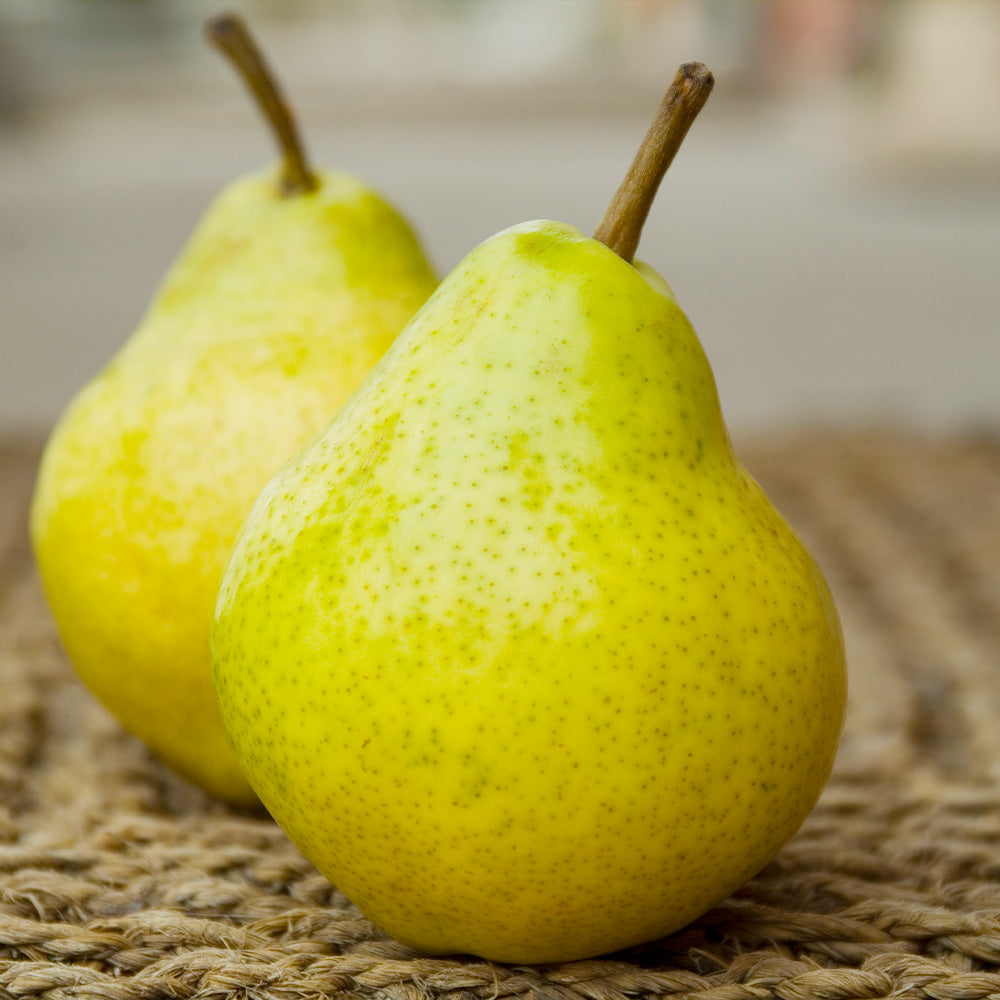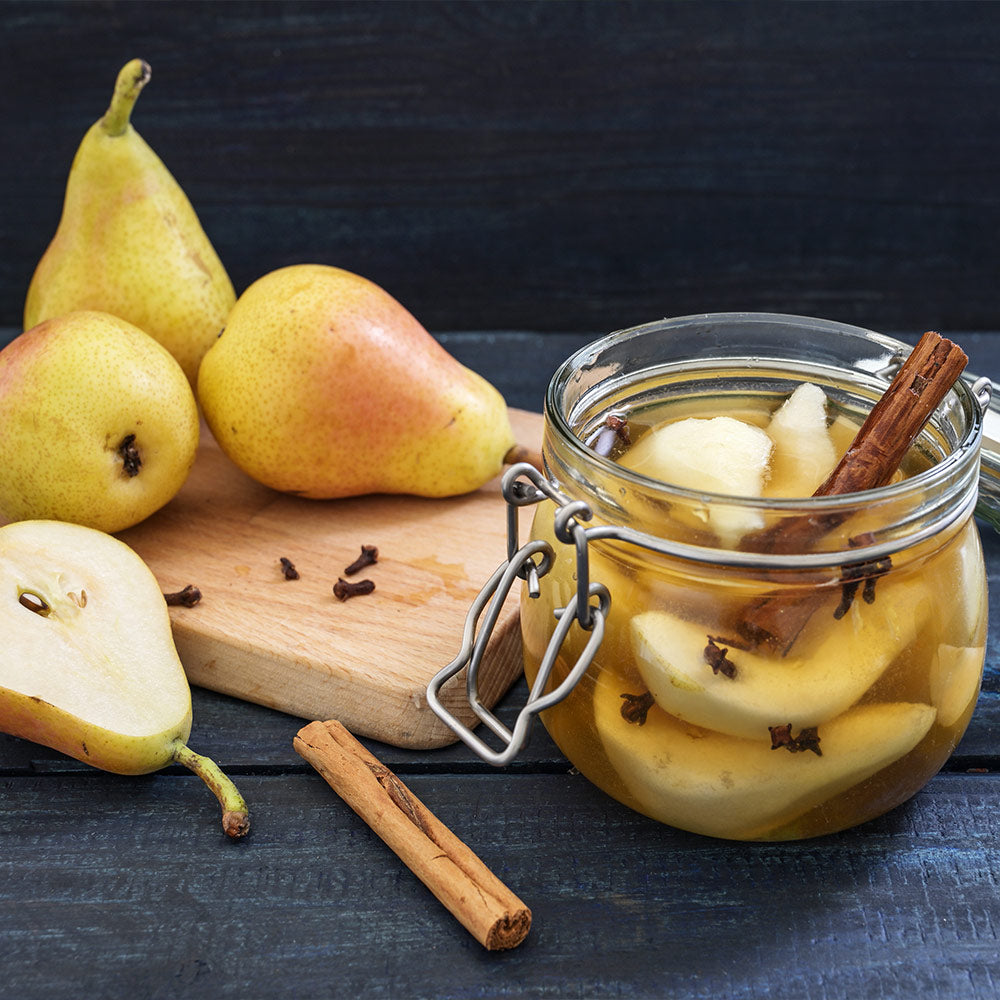Grow A Lifetime of Maintenance-Free Pears
Grow the world's most popular pear in your own backyard! Homegrown Bartlett Pears are better and fresher than supermarket ones.
The biggest benefit is the taste that comes when your pears are naturally tree-ripened rather than picked early and refrigerated.
The Bartlett is so popular because of its sweet, juicy taste. Each year your tree provides bushels of pears that are great for canning, cooking and snacking.
You can pick this delicious fruit in late summer. When ripe, these pears are so sweet that they fill your yard with a delicious aroma.
Plus, this tree is cold-hardy and adaptable to a wide range of soil conditions. Plant several to ensure you get plenty of large pears.
These well-branched Bartlett Pear trees will sell out, so we recommend that you order yours today!
Planting & Care
1. Planting (in-ground):
Location: Give your pear tree a location that features full sun and well-draining soil. Choose a bright, sheltered location, preferably with southern exposure.
1) Dig a hole three times the size and just as deep as the root ball. You want to be careful that the tree does not settle too low in the soil.
2) After the hole is dug, carefully loosen and unwind any roots as necessary.
3) Plant the tree so that the roots are spread in the hole and the entire root ball is covered with soil.
4) Fill in the hole completely and gently remove air pockets that may have formed by tamping down with a spade.
5) Water the tree thoroughly after the tree has been planted.
2. Watering: Water your pear tree as necessary giving it at least 1 or 2 inches of water once a week. When the weather gets hot and dry during the peak of summer, increase the amount of water to maintain proper hydration and moisture. Do not water the pear tree after the first frost in the fall. You should resume watering once the last frost has past.
3. Pruning: When pruning, it’s important to trim the pear tree’s central leader to promote an upright position. If there are any competing branches present, remove them so that multiple leaders do not form. Maintain the tree’s natural shape by pruning large, lateral branches. Dead, dying or wilted branches should always be removed to help the Pear Tree focus its energy on growing healthy and producing an abundance of fruit.
*Tip* It’s always good to sterilize your cutting tool(s) with rubbing alcohol to ensure a clean cut that no pathogens can get into.
4. Pests: Pear trees are susceptible to insects such as maggots, moths, scale and aphids. To prevent infestation of these and other pests, treat with an insecticide in the early spring. Signs of infestation to be watchful for include yellowing or browning of foliage, rotted or eaten fruit and nibbled leaves. Spray the tree with the insecticide according to the directions on the label.
5. Harvesting:
1) Harvest pears at the end of the growing season (October-November). Watch the fruit regularly, as it will require two to three weeks to harden before harvest.
2) Pick pears when they have reached full color and size and are firm to the touch. Check the tree daily and pick fruit every two to three days until your harvest is complete.






Comment